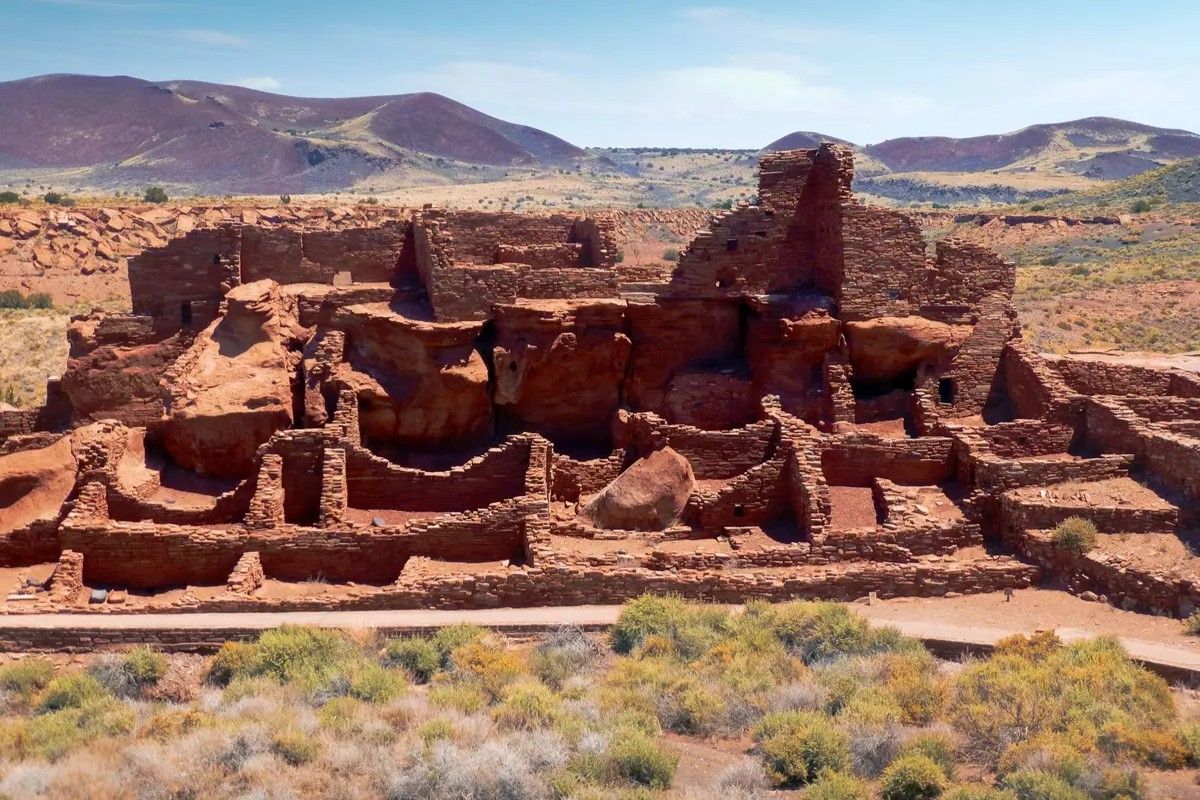Hidden Indigenous Trading Routes Of The Southwest Desert

Have you ever wondered how ancient people traded goods across vast deserts? The Southwest Desert holds secrets of hidden indigenous trading routes that connected tribes and facilitated the exchange of goods, ideas, and culture. These paths, often overlooked, were vital for survival and prosperity. Imagine navigating through harsh landscapes with only natural landmarks and oral traditions to guide you. These routes reveal a rich history of resilience and ingenuity. From turquoise and pottery to food and textiles, the items traded tell stories of interconnected communities. Join us as we uncover the mysteries of these ancient pathways and the people who traveled them.
Ancient Pathways of the Southwest Desert
The Southwest Desert holds secrets of ancient trading routes used by Indigenous peoples. These paths connected tribes, facilitated trade, and fostered cultural exchange. Let's explore some of these hidden routes.
1. Chaco Canyon
Chaco Canyon, located in New Mexico, served as a major center for trade and culture. The Ancestral Puebloans built extensive road systems connecting Chaco to distant communities.
- Great North Road: This road stretched north from Chaco, linking it to other significant sites.
- South Road: Connected Chaco to the southern regions, facilitating trade with tribes in present-day Mexico.
2. Hohokam Canals
The Hohokam people of Arizona engineered an impressive network of canals. These waterways not only supported agriculture but also served as trade routes.
- Salt River Canal: This canal system connected various Hohokam villages, enabling the exchange of goods.
- Gila River Canal: Extended trade routes further, linking the Hohokam with other tribes along the Gila River.
3. The Turquoise Trail
Turquoise was a highly valued commodity among Indigenous tribes. The Turquoise Trail, spanning from New Mexico to Colorado, was a vital trade route.
- Cerrillos Hills: Known for its rich turquoise deposits, this area was a key stop on the trail.
- Chimney Rock: Served as a trading post where turquoise and other goods were exchanged.
4. The Mojave Road
The Mojave Road, stretching across California, was a crucial trade route for the Mojave people. This path connected the Colorado River to the Pacific Coast.
- Piute Springs: A vital water source along the Mojave Road, ensuring safe passage for traders.
- Camp Cady: A historic site where traders and travelers rested and resupplied.
5. The Old Spanish Trail
The Old Spanish Trail linked New Mexico to California, facilitating trade between the Southwest and the Pacific Coast.
- Santa Fe: The starting point of the trail, a bustling trade hub.
- Los Angeles: The trail's endpoint, connecting traders to coastal markets.
6. The Salt Trail
The Salt Trail, used by the Hopi and Zuni tribes, was essential for transporting salt from the Grand Canyon to surrounding regions.
- Hopi Salt Mines: Located in the Grand Canyon, these mines were a crucial source of salt.
- Zuni Pueblo: A key destination for salt traders, where salt was exchanged for other goods.
7. The Gila Trail
The Gila Trail, traversing Arizona and New Mexico, was a significant route for trade and migration.
- Gila Cliff Dwellings: An important stop along the trail, providing shelter and resources for travelers.
- Casa Grande Ruins: A major trading center where goods from various regions were exchanged.
8. The Camino Real
The Camino Real, or Royal Road, connected Mexico City to Santa Fe, New Mexico. This route was used by Spanish explorers and Indigenous traders alike.
- El Paso: A key crossing point along the Camino Real, facilitating trade between Mexico and the Southwest.
- Albuquerque: A major stop on the route, known for its vibrant trade markets.
9. The Navajo Long Walk
The Navajo Long Walk, though a tragic chapter in history, also highlights the resilience and adaptability of the Navajo people. This route, forced upon them during their relocation, later became a path of return and trade.
- Fort Sumner: The endpoint of the Long Walk, where the Navajo were forcibly relocated.
- Canyon de Chelly: A significant cultural and trading site for the Navajo upon their return.
10. The Anza Trail
The Anza Trail, named after Spanish explorer Juan Bautista de Anza, connected Arizona to California. This route was used for migration and trade.
- Tubac: The starting point of the trail, a historic Spanish presidio.
- San Francisco: The trail's endpoint, linking traders to the bustling port city.
The Legacy of Indigenous Trading Routes
The hidden Indigenous trading routes of the Southwest Desert reveal a rich history. These paths connected tribes, facilitated trade, and fostered cultural exchanges. They weren't just trails but lifelines that supported communities. Exploring these routes today offers a glimpse into the past, showing how ancient peoples adapted to and thrived in harsh environments. The legacy of these routes is still visible in modern highways and trade practices. Understanding this history deepens appreciation for the resilience and ingenuity of Indigenous cultures. As you travel through the Southwest, remember the significance of these ancient paths. They are more than just historical footnotes; they are a testament to human connection and survival. Discovering these routes enriches our knowledge and respect for the land and its original inhabitants.

